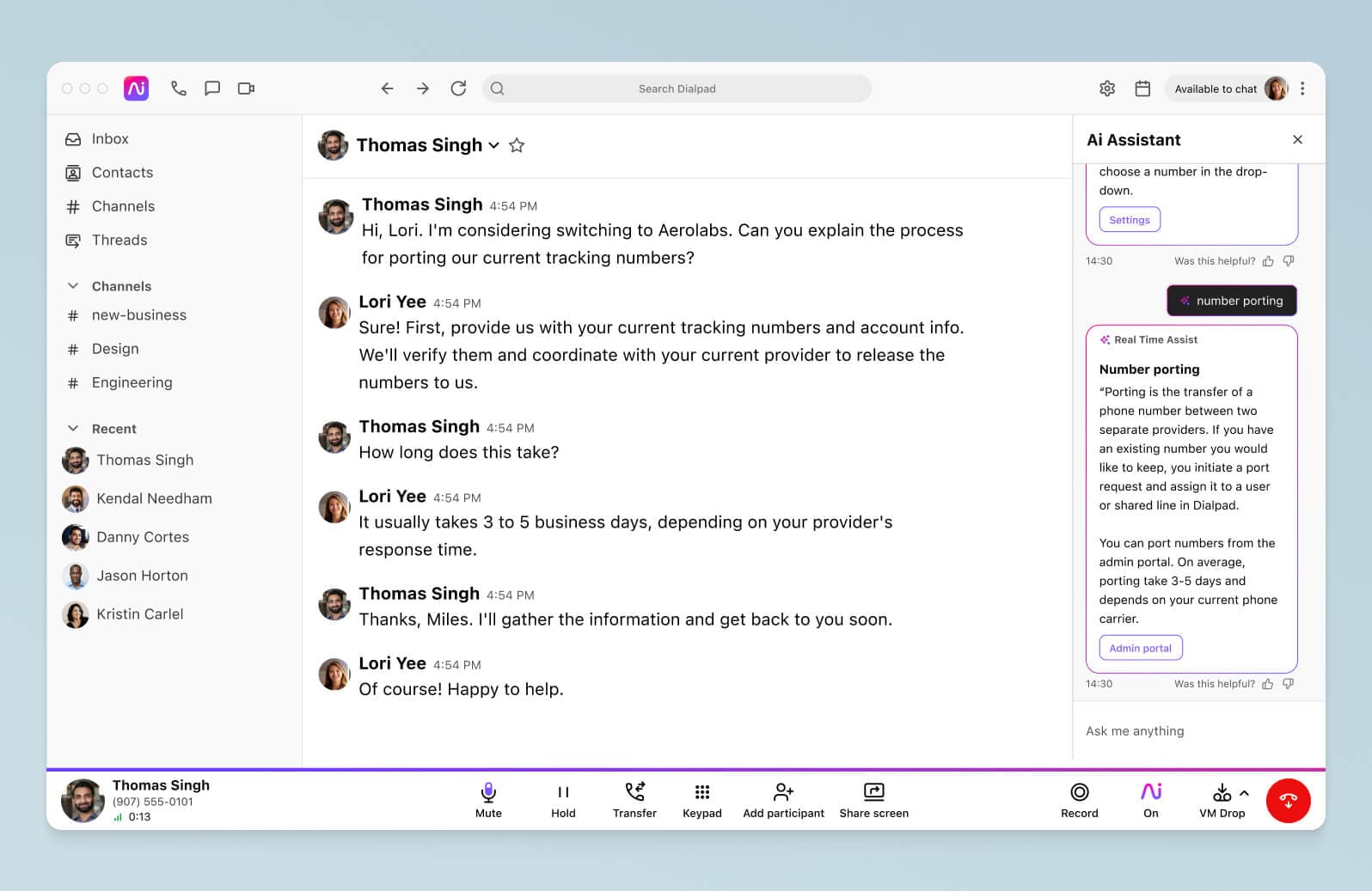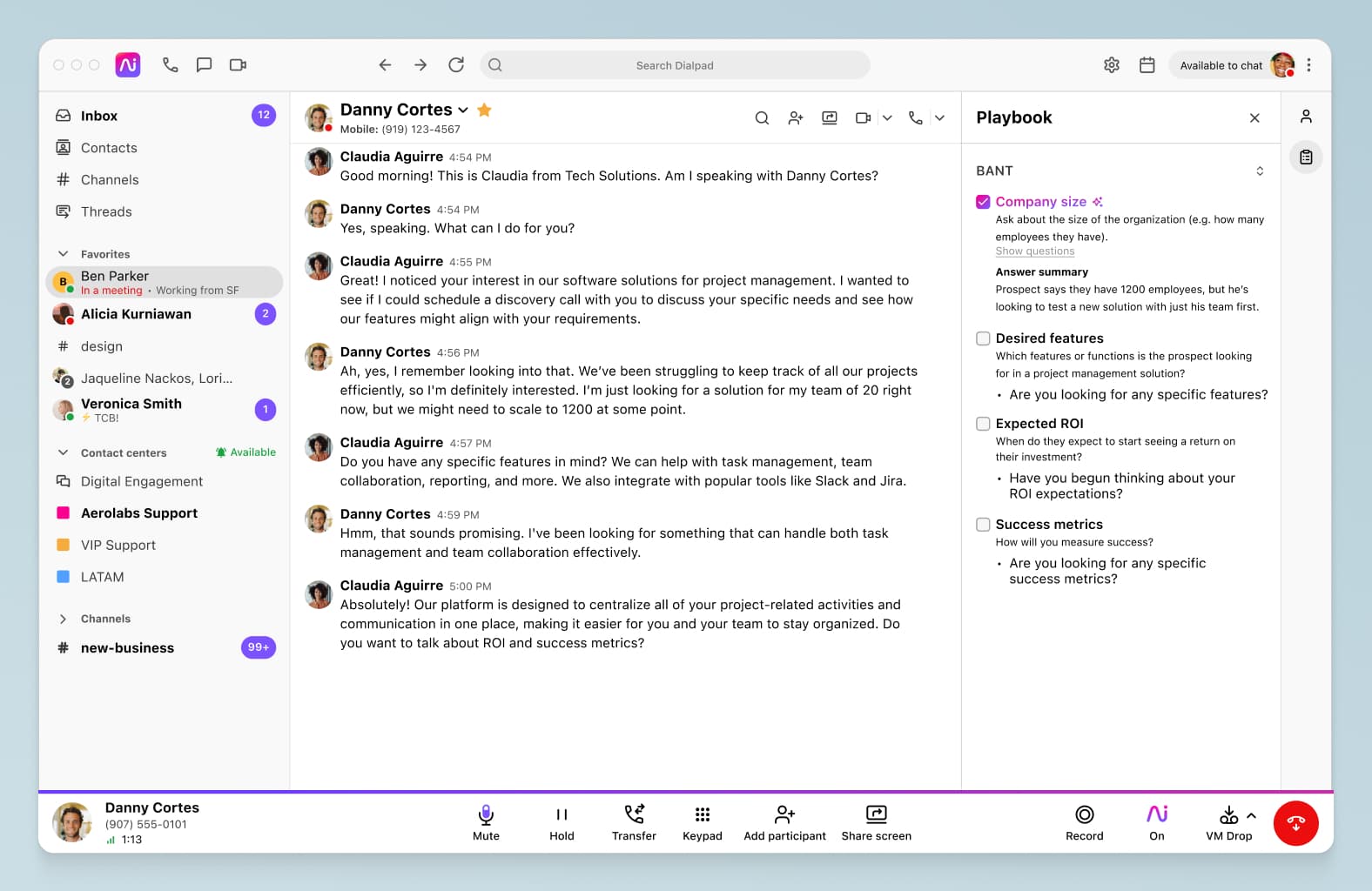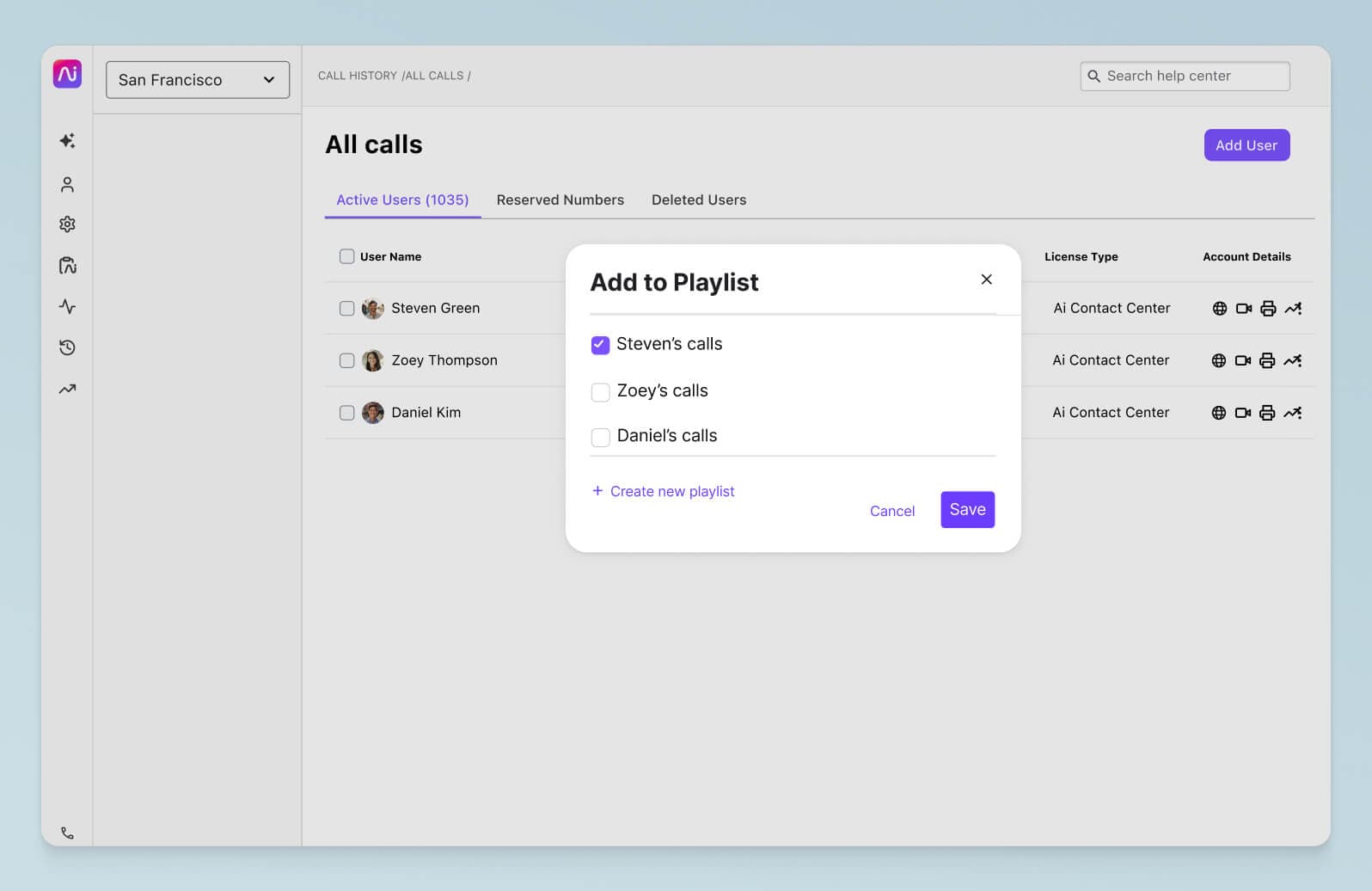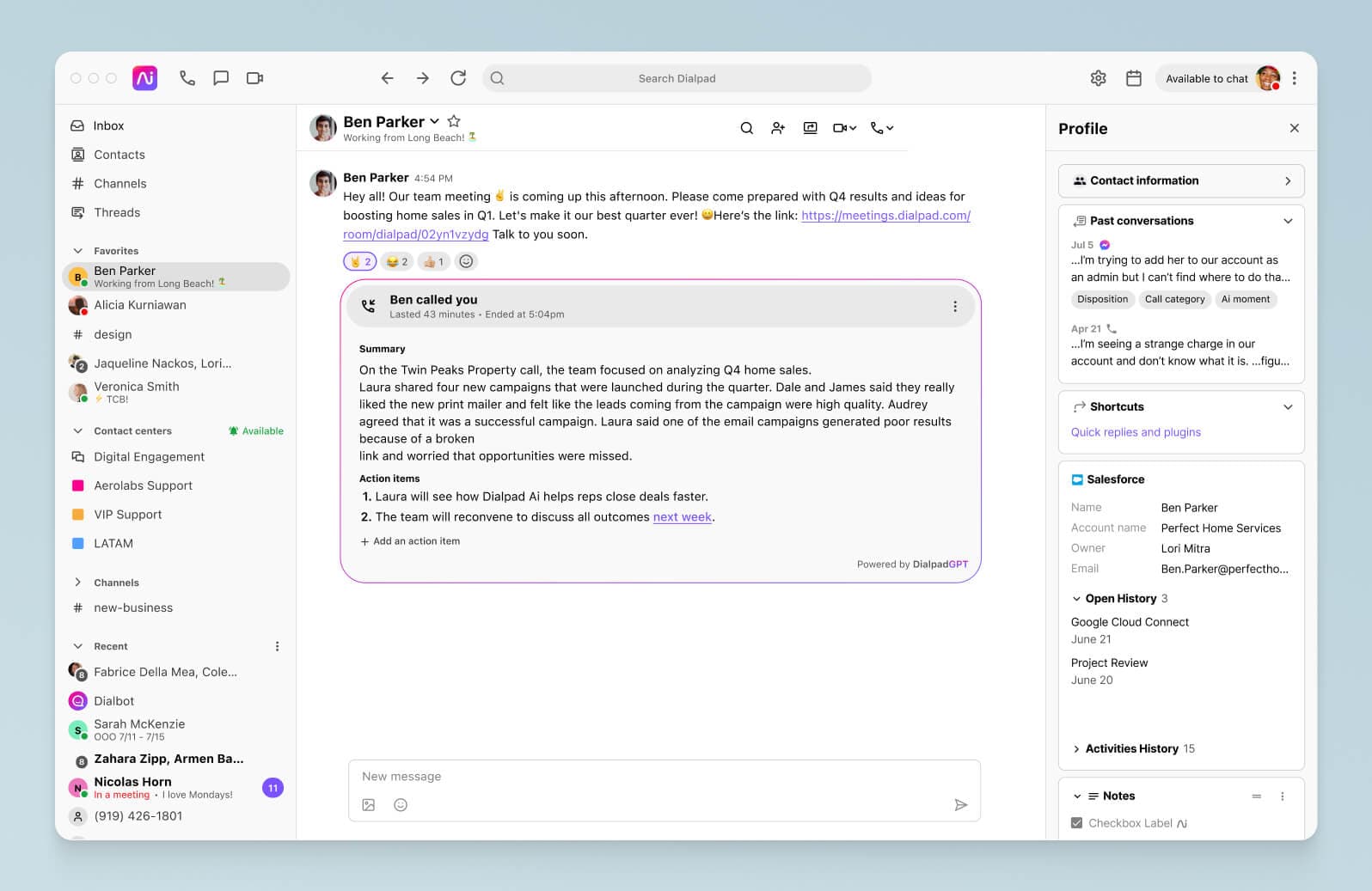Understanding sales efficiency: What it is, how to measure it, and how you can improve yours

Principal Account Executive, Enterprise at Dialpad

Tags
Share
If you’re trying to understand what sales efficiency means, a bit of pop culture might help get you started. You’ve heard the phrase “time is money” in a TV show or movie, right? It’s a big-time cliche that’s really just a catchy way to express the idea that misusing a resource (time) means sacrificing positive results (money).
Sales efficiency is a little more nuanced than that, but overall the idea is more or less the same. Understanding how to correctly define, measure, and improve sales efficiency for your team isn’t complicated—but it’s critical for any business that’s serious about maximizing returns on investment.
Looking for a quick but comprehensive primer on how to improve your team’s sales efficiency? This post will get you up to speed. Let’s dive in.
What is sales efficiency?
Like I said, sales efficiency as a concept is pretty simple. You can think of it like the fuel efficiency of a car, which measures how far you can go with the fuel provided.
For a business, sales efficiency is a way to measure your sales results in relation to the resources allocated to sales. The practical business value of measuring and tracking sales efficiency is that, with these numbers on hand, you can begin finding ways to improve it.
For example, if your sales team generated $2 million in Q1 but sales expenses were $2.5 million during the same period of time, you’ve got a problem. Upon investigation, you might discover your sales team is tangled up in time-consuming tasks that don’t directly relate to generating revenue. So instead of cutting expenses to improve sales efficiency, you need to refine processes so your team can spend more time on revenue-generating activities.
Improving your sales efficiency metrics is a savvy way to improve your margins, as it doesn’t require growing net new business or making significant additional expenses. Think of it like working smarter, not harder.
What about sales effectiveness? Is it the same thing?
Sales efficiency is often confused with sales effectiveness, which is an entirely different sales metric. They’re both important for businesses to track, and they’re closely related, but they differ in some key ways.
Where sales efficiency is a measure of how well a business or sales team utilizes its resources, sales effectiveness metrics are a measure of how adept your sales team is at converting leads into customers. In other words, it’s a reflection of the skill level of your sales reps.
Both metrics are more impactful when they work together, as they tell different parts of a sales team’s story. As you’re looking for ways to improve your sales efficiency metrics, for example, you’ll need to assess your sales effectiveness metrics as part of the process. Are they up to the task? Are there stages of the pipeline some or all of your reps struggle with? Does your team need some additional training or support?
How to calculate sales efficiency: A simple sales efficiency formula
Finding your sales efficiency formula is straightforward enough. You simply divide sales revenue by the cost of making those sales:
Sales revenue / Cost of making sales = Sales efficiency
With this simple formula, you can measure and track sales efficiency for different periods of time (such as monthly, quarterly, and yearly) and even across different sales teams or departments. This can give you a more granular view of things and make it easier to chart progress over time.
Where things can get tricky is how you calculate the costs of making sales. This can include everything from the salaries of your sales reps to the subscription costs of sales software. Being extra diligent during this step is worth the effort. You want to ensure the sales efficiency numbers you come up with are providing as accurate a picture as possible, and that means not leaving out costs no matter how small or insignificant you think they are.
What’s a good sales efficiency ratio for your team to aim at?
Ok, so you have your formula in hand. Maybe you even crunched some numbers. Now what? What is a good sales efficiency ratio?
One is the number to remember. If you divide your sales revenue by the cost of making that sales revenue and you get a result of 1, that means you’re breaking even—you’re making as much in sales as you’re spending to make those sales.
If your sales efficiency ratio is below 1, that means you’re spending more to generate sales than you’re generating. That’s an alarm bell and means you need to do some serious work to improve things.
Generally speaking, a sales efficiency ratio of 1-3 is good while anything above 3 means you’re in fantastic shape.
Sales efficiency in SaaS and the SaaS magic number
In SaaS, sales efficiency is sometimes referred to as the Magic Number and blends both sales and marketing efficiency together. The formula remains the same but relevant costs of marketing are also included.
This is because the success of any SaaS product is so heavily dependent on sales and marketing that making them both effective and efficient is absolutely critical for growth. SaaS companies aren’t the only types of companies in which this might be the case, so as you start your journey to assess the sales efficiency at your company, you might want to consider including some or all costs of marketing as well.
Hints and tips to improve your sales efficiency
There’s no shortage of ways to start improving sales efficiency, and what works for one team or business may not be relevant elsewhere. That being said, there are a few universal approaches that are great places to start.
Embrace technology
The world of sales has a lot of time-tested processes and formulas that shouldn’t be ignored. But there’s also no need to ignore the amount of sales efficiency tools that are available to help your team work smarter and faster. For example, Dialpad Ai gives sales reps cutting-edge tools to maximize their time and effort, including live sentiment analysis, Ai coaching, and real-time assists:

Fine-tune your sales process
Cut out the fluff in your sales cycle. The leaner your process, the faster you close deals. That often means finding ways to identify the right leads quicker so that reps aren’t spending valuable time trying to convert leads who just aren’t right for your product or service. This can be as simple as going back to basics, such as ensuring your reps are following the BANT method, or something more advanced like implementing the MEDDIC sales methodology:

Invest in training
Regular training and development are key to improving sales efficiency. They should be ongoing processes so that reps can stay sharp and continually reinforce their core skills, nurture new abilities, and stay on top of evolving product knowledge. Sales training is even more powerful when it’s accurately tailored to each individual’s needs. Tools like Dialpad can make this more precise thanks to its real-time Ai coaching features like automated scorecards, call summaries, and coaching playlists:

Automate where possible
Sales reps can quickly become bogged down in a lot of work that doesn’t directly drive revenue. Even tasks like writing up summaries of each call they make and identifying action items can be time-consuming. If you’re looking to improve your team’s sales efficiency, taking these types of tasks off your reps’ plates by automating them through platforms like Dialpad Ai is low-hanging fruit that can start paying dividends immediately:

Other sales efficiency metrics to track
Your sales efficiency ratio isn’t the only metric that can help you get a clearer picture of how your team is performing. Use the metrics below as well to ensure you’re piecing together a complete story.
Conversion rates
Conversion rates are staple metrics that every business should be tracking and measuring diligently, but they’re still worth calling out explicitly. By keeping an eye on how many leads turn into customers at different stages of the sales funnel, you can quickly identify areas that need extra attention.
Customer acquisition cost (CAC)
Knowing how much it costs to acquire a new customer is also a valuable sales metric that helps shed light on your team’s overall sales efficiency. It can be tricky to nail down the precise costs that go into each conversion, but once you find an approach that works for your business you can scale it consistently.
Customer lifetime value (CLV)
Conversion rates and customer acquisition costs give you insight into the probability and costs of winning a customer’s business. These are valuable but from a sales efficiency perspective, it’s also vital to know what your customer lifetime value metric is. This is the average revenue generated per customer or converted lead and accounts for return customers or repeat business. One way to improve sales efficiency, of course, would be to increase CLV while keeping your CAC the same.
Sales efficiency: Tracking whether you’re getting the most from your resources
Remember, sales efficiency is simple. It’s about making every dollar, every sales call, and every sales resource count. A sales efficiency ratio above 1-3 means you’re on the right track, but it’s also not the upper limit. With the right tools, like AI sales software, and processes in place, you can turn your sales team into a revenue-generating machine.
Tools like Dialpad Ai are an easy way to optimize your team’s time and give them resources to improve their sales efficiency metrics. From automating mundane tasks to providing real-time insights, these tools aren't just about doing more with less, they're also about doing it better.
Power your sales with Ai
Get in touch with our sales team for a hands-on look at Dialpad Ai Sales Center, or take a self-guided interactive tour of the app first!








